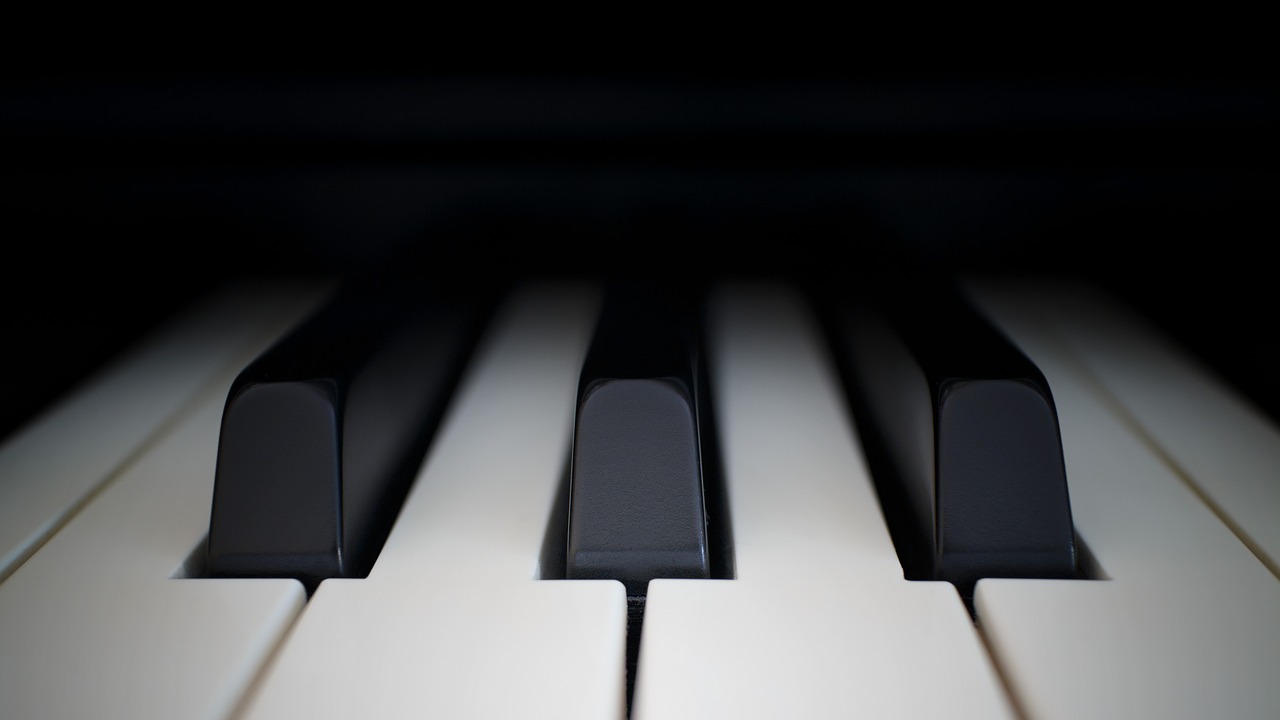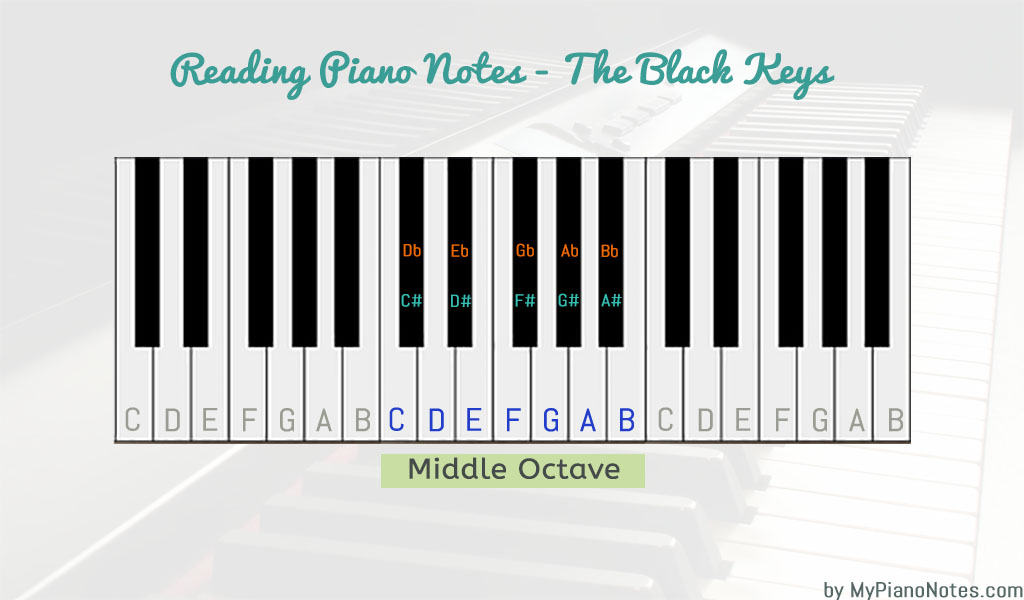Are you new to the Piano? Want to learn some songs right away? No Problem. But first its important that you get a grasp on reading the piano notes. Playing a song on Piano can be really easy if you have the piano notes for that song with you. Piano notes come in a few different formats, and the Lettered Piano Notes are the best beginner-friendly notations available right out.

That is the reason, all the songs on MyPianoNotes.com use letter notations for Representing Piano Music. We will also explain how to read sheet music in a different article. Let’s get going!
If you have read any piano notes on our site, you must have noticed that the notations are filled with an awful amount of Letters(A, B, C, D, ….). Those letters represent nothing but the various keys of the piano (Isn’t that obvious?).
Part 1: Reading the White Piano Keys
Piano or a Keyboard consists of two kinds of keys. The white keys and the black keys. Now let us take a look at the following picture to understand better.

As you can see I have named all the white keys, and you can clearly see many white keys have the same name. But let us focus on the central white keys for now (the ones in blue colour).
One complete set of white keys from C to B is called an Octave. And in the world of Piano, the octave starts from C, and not ‘A’ like the Alphabets.
Hold On! An Octave sounds like it must consist of 8 Letters. But the picture suggests that it consists of 7 only. In the world of Music, an Octet comprises of 8 Notes (Do, Re, Mi, Pha, So, La, Ti, Do). If you have ever sung this or heard this, you might have noticed that you start with ‘Do’ and end with ‘Do’. In Indian Music (Sa, Re, Ga, Ma, Pa, Dha, Ni, Sa) is used and follows the exact same principle. Ideally, an Octet on Piano should be from C to C. but if there are two Cs in one octave it would become difficult to denote them. You will soon understand this better. But for all purposes on MyPianoNotes.com – An Octave would start from C and end on B.
If you have a piano right now. Go Ahead and Play the keys from C to B one by one. Sounds Familiar? Which song was that, Let me know in the comments.
Now that you understood how the white keys are represented, let us take a look at the black keys now.
Part 2: Reading the Black Piano Keys
There aren’t an equivalent number of Black and White keys on a Piano. A piano consists of lesser Black keys than white Keys. Once again, I am sorry for stating obvious things. But it’s important to understand the reason behind this. And I will try to tell you
Centuries ago, the Gods of Music decided with this world should have only twelve musical notes. But only seven of them got names and were called an Octave. Remaining 5 notes were considered sharper or flatter variations of the 7 Named notes.
The makers of the piano thought it would be easier to differentiate between the natural notes and the remaining 5 notes, if they were given smaller and darker coloured keys. If the Black keys were just like the white keys then the piano would be much longer than it already is and difficult to play.
Now that we have History covered and is known the Black keys are sharper or flatter variations of the white keys. Let us take a look at which black key is what?

Now Many of you Must have the Question that what is the difference between ‘#’ and ‘b’? Both are notations which represent a jump or drop in a note. For Example, C# means the same note as C, only half-step sharper. Cb means — Wait! There is no Cb. Basically, Cb = B. If someone writes that, he basically wants you to play the B Note. But there is a note Eb and it means, Note E half-step flatter.
‘#’ can be pronounced SHARP. ‘b’ can be pronounced FLAT.
Part 3: Jumping Between Octaves
There are very few songs which can only be played using a single octave. Most songs, require atleast 2. And if you add chords to them, the no. simply increases. How do we denote a jump between octaves? This is the easiest bit to remember. We use the following signs.
- + = Jump 1 octave
- ++ = Jumpe 2 octaves.
- – = Drop 1 Octave
- — = Drop by 2 Octaves.
If a Song Notation Reads the Following – C B A D# F# C+ B+. Then it means that the last 2 notes are from the higher octave from where you started.
Part 4: Choosing the Right Octave to start
Truth be told, you can start from any octave you want. But there is one octave from which the music will sound the best, and this octave varies from song to song. If you have a high pitched song, you may want to pick an octave between center and the right of your piano or keyboard.
Majority of the songs are played from the centermost octave on your piano. You can try 3-4 Octaves for one song before you will get an idea about which is the right one. Don’t feel shy about trying one song on different scales. That’s what the music remixers are doing these days.
Now let us summarize what all we have learnt today.
Part 5: Summary
- Piano consists of Multiple Octaves.
- One Octave consists of 7 white keys & 5 black keys.
- An Octave starts from C and ends on B.
- Black keys are sharper or Flatter versions of White Keys.
- + & – denote a jump or drop in octave.
- You can start a song from any octave.
If you still have any questions regarding how to read piano notes, feel free to ask them in the comments below, and I will be glad to clear any doubts you may have.
